Contents
- Early History
- Valzari and the Legacy of Valmiki
- Kanalda and Rishi Kanva
- Vyasa Mandir in Yawal
- Bhaskaracharya and Patnadevi
- Colonial History
- Local Figures & Organizations
- Shri Pratap Shethji and the Indian Institute of Philosophy
- Khandesh College Education Society
- Pandurang Sadashiv Sane
- Post-Independence Era and Contemporary Educational Infrastructure
- Primary & Secondary Education
- Institutions of Higher Learning
- Kavayitri Bahinabai Chaudhari North Maharashtra University (KBCNMU), Jalgaon
- NGOs and Community-Based Education Efforts
- Vardhishnu
- Graphs
- Enrollment and Dropout Rate
- A. Student Enrollment Numbers
- B. Student Enrollment (Class-Wise)
- C. Student Enrollment (Gender-Wise)
- D. Student Enrollment (By School Management Type)
- E. Drop Out Rate (By Schooling Level)
- F. Drop Out Rate (By Gender)
- Schools
- A. No. of Schools
- B. No. of Schools (Filtered by Gender Mix)
- C. No. of Schools (By School Management Type)
- Teachers
- A. No. of Teachers
- B. No. of Teachers (By School Management Type)
- C. No. of Teachers (Male vs Female)
- D. Education Level of Teachers
- Sources
JALGAON
Education
Last updated on 28 July 2025. Help us improve the information on this page by clicking on suggest edits or writing to us.
The educational framework of Jalgaon aligns with the broader structure of the Indian education system, encompassing pre-primary, primary, secondary, and higher education. However, its history extends well beyond this contemporary structure. Interestingly, the district has a rich educational heritage that can be traced back to the Puranic age. It is believed to have been home to influential figures who contributed to India’s literary and educational legacy.
By the 19th century, however, this changed with the introduction of the Western education framework in the district. British administrators and missionaries became actively involved in shaping education in the region. Still, even as colonial influences grew, the early 20th century saw a wave of local initiatives; its existence indicated an increasing public awareness regarding the importance of education. Notably, during the colonial period, Jalgaon emerged as a hub for intellectual discourse around Vedanta philosophy which was an initiative, actively shaped and promoted by its inhabitants. Local communities took charge of education, a movement that carried into the post-independence era, shaping the district’s educational landscape in lasting ways.
Early History
While much of Jalgaon's educational heritage remains obscure, tales abound of areas within the district that may have been home to various rishis, sants, and revered intellectual figures, hinting at its rich educational and intellectual landscape.
Valzari and the Legacy of Valmiki
Long ago, in a small village near Chalisgaon known as Valzari, it is believed that the great rishi Valmiki, the revered author of the Ramayan, may have lived. It is popularly believed that, in the forests of Valzari, he is believed to have found the inspiration to compose the epic tale of Rama, Sita, and their journey. This story has become one of the greatest epics in Indian literature, and the land of Valzari is still remembered as a place of great spiritual importance. It is important to note that Valmiki was also known for his spiritual teachings, hence it is possible that he may have conducted teachings or spiritual practices in the area around Valzari.
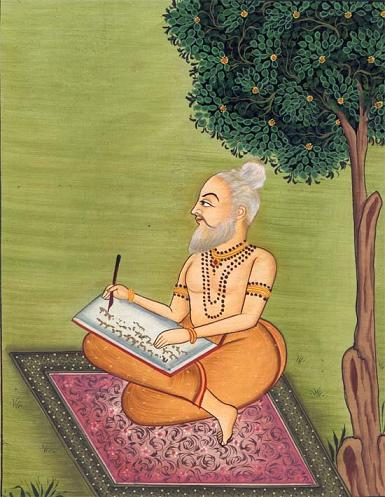
Kanalda and Rishi Kanva
Another important figure connected to Jalgaon is the Rishi Kanva, who is associated with the village of Kanalda. According to tradition, Kanva Muni resided in the forested area around the village, where he instructed his disciples in meditation and spiritual disciplines. Such associations have contributed to Kanalda’s image as a place of learning and retreat.
Vyasa Mandir in Yawal
Yawal town contains a shrine dedicated to Rishi Vyasa, the author of the Mahabharat. The site is believed to mark a location where Vyasa may have stayed, and it continues to attract visitors seeking to honour his legacy.
Bhaskaracharya and Patnadevi
The village of Patnadevi in Chalisgaon taluka is traditionally associated with Bhaskaracharya (Bhaskar II), the renowned 12th-century mathematician and astronomer. While there is debate about whether he was born there or merely resided in the area, local tradition holds that he conducted astronomical observations from this site. Patnadevi’s secluded setting in the hills, near the ancient Siddheshwar Mandir, is said to have provided a conducive environment for study and writing.
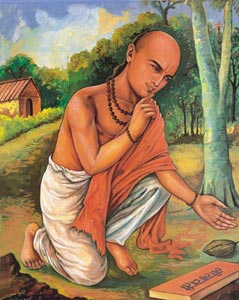
Bhaskaracharya’s most significant work, the Siddhānta Shiromaṇi, composed in 1150 CE, comprises four sections: Līlāvatī (arithmetic), Bījagaṇita (algebra), Grahagaṇita (planetary calculations), and Golādhyāya (sphere-based astronomy). These texts played an important role in the development of mathematics and astronomy in medieval India. The association of such scholarship with Patnadevi highlights the presence of intellectual activity in parts of present-day Jalgaon district during the pre-modern period.
The presence of some systems of education in the district during the medieval period are also recorded. The Khandesh District Gazetteer (1880) notes that prior to the introduction of colonial education, many large villages in the region operated locally run schools. These were typically managed by Brahmin teachers, with instruction taking place in homes or rented spaces. Teachers were often paid in kind, such as grain, supplemented occasionally with monetary support. The curriculum generally focused on basic arithmetic and the Modi script, which was commonly used for administrative writing in Marathi.
Colonial History
The introduction of Western education in Jalgaon district began under British rule, particularly in the 19th century. Early efforts took the form of regional language schools supported by colonial administrators and missionary organizations. The Khandesh District Gazetteer (1880) records that by the 1840s, in Jalgaon, schools had been established in towns such as Jamner and Erandol.
Local Figures & Organizations
While entities from the West played a significant role in shaping the educational landscape of Jalgaon, local figures and organizations also emerged as key contributors. These institutions, founded by Indian leaders and reformers, continue to shape education in the district today.
Shri Pratap Shethji and the Indian Institute of Philosophy
Shri Pratap Shethji, an industrialist and philanthropist from Amalner, played a significant role in the development of higher education and philosophical inquiry in the early 20th century. In July 1916, he founded the Indian Institute of Philosophy in Amalner, at a time when indigenous systems of knowledge were facing challenges under colonial educational policies that increasingly prioritized vocational training over classical and philosophical learning.

The institute was established as a centre for advanced philosophical study, with a focus on Vedanta, Neo-Vedanta, and comparative philosophy. Over the next several decades, it became a key intellectual hub in the region, attracting scholars such as Prof. G.R. Malkani, Prof. Rasbiharidas, and Prof. K.C. Bhattacharya. The social reformer and educationist Sane Guruji was also associated with the institute, contributing to its vibrant academic culture.
The Indian Institute of Philosophy published several journals and monographs, including Philosophical Quarterly and Tattwadnyan Mandir, both of which gained recognition within Indian and international philosophical circles. In June 1993, the institute was integrated into Kavayitri Bahinabai Chaudhari North Maharashtra University (KBCNMU), Jalgaon, where it continues to function as a centre for research.
Pratap Shethji’s educational efforts appear to have extended beyond the field of philosophy. In 1945, he established Pratap College in Amalner, with the aim of providing accessible higher education in arts, science, and commerce. The locality of “Pratapnagar” in Amalner is named in his honour, reflecting his lasting contributions to the region’s educational development.
Khandesh College Education Society
The Khandesh College Education Society (KCES) was established in 1944 under the leadership of Dr. G.D. Bendale, a noted surgeon and educationist. The society played a key role in the expansion of higher education in the region. Its flagship institution, Moolji Jetha College (MJC), was founded in 1945 and became one of the leading colleges in northern Maharashtra. KCES later expanded to include an engineering college and other institutions, offering programs across disciplines from kindergarten to postgraduate levels.
Pandurang Sadashiv Sane
Pandurang Sadashiv Sane, popularly known as Sane Guruji, was a writer, educator, and social reformer. Though born in Ratnagiri, it was in Jalgaon, as locals say that he found his karmabhoomi. His career in education began in 1924 at Khandesh Education Society’s High School, where he earned the title "Guruji," reflecting his influence on the students here.

His literary contributions, particularly in Marathi, include works such as Shyamchi Aai, which became widely used in moral and value-based education. Other than literature, Sane Guruji was involved in campaigns for social reform, including efforts to end caste discrimination and promote Mandir entry rights for Dalits. He advocated for an inclusive, ethical, and socially conscious approach to education. Through his magazine Sadhana, he provided a platform for discussions on progressive thought and social justice.
Post-Independence Era and Contemporary Educational Infrastructure
Following India's independence, the education system in Jalgaon underwent major transformations. The introduction of structured education levels, pre-primary, primary, secondary, and higher education and the implementation of National Education Policies heavily shaped the educational landscape of the district. Over the years, the education sector has developed with contributions from both government-funded institutions and private organisations. Additionally, Educational boards were also introduced, each offering distinct curricula and standards, providing students with more choices.
Primary & Secondary Education
During the colonial period, both public and private efforts in education primarily focused on primary and secondary schooling, as indicated by data from district gazetteers across Maharashtra. Higher education remained underdeveloped in most districts, including Jalgaon, with gradual improvements over time. While basic infrastructure for primary and secondary education existed, its expansion was closely tied to increasing enrollment and greater involvement of local figures.
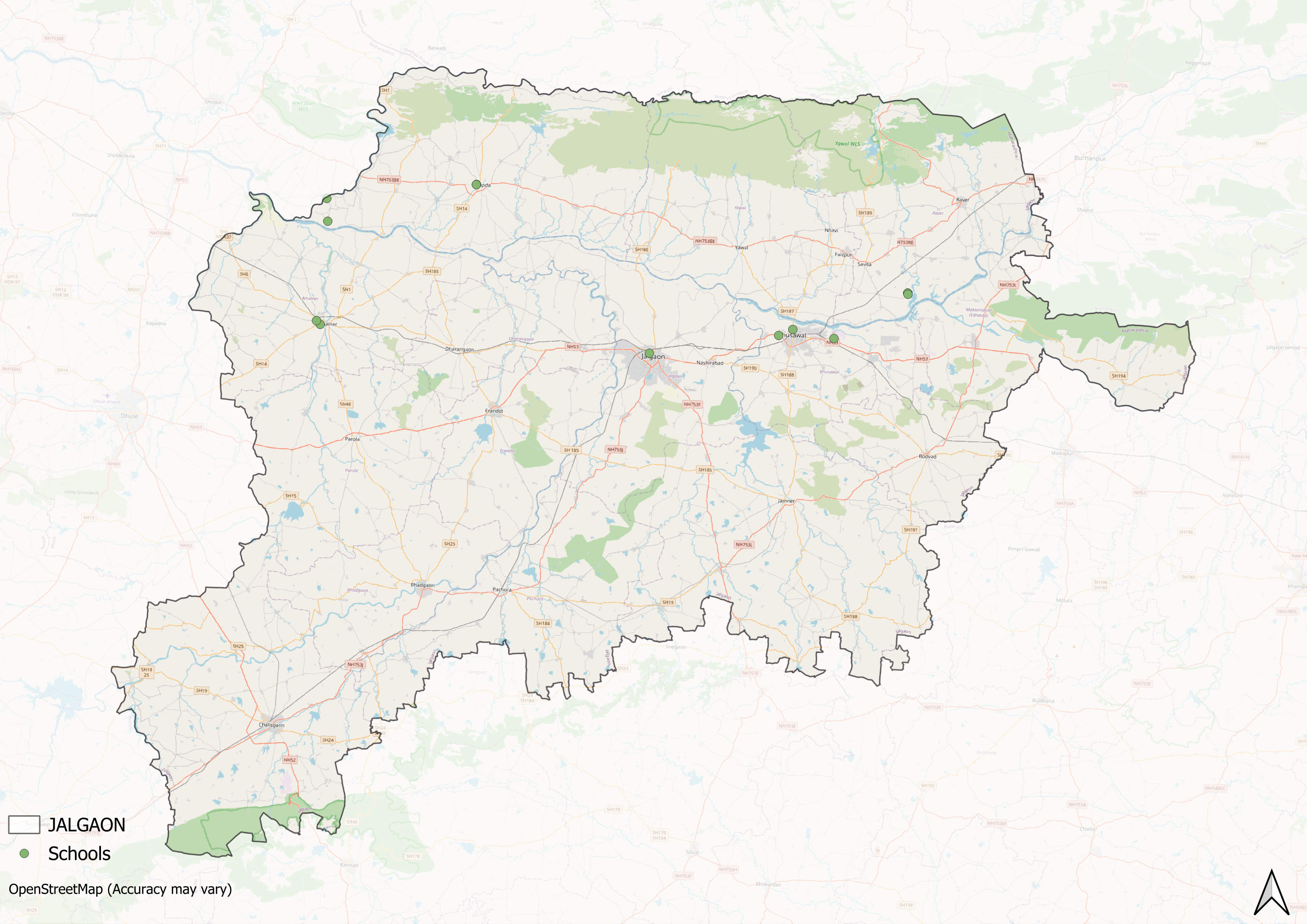
Today, this expansion is evident in the widespread presence of schools across various wards of Jalgaon, with available data reflecting the steady growth of educational institutions in both urban and rural parts of the district.
Institutions of Higher Learning
Perhaps one of the most notable changes in Jalgaon’s educational landscape is tied to the establishment of higher education institutions. While primary and secondary schooling expanded steadily, opportunities for advanced education remained limited for much of the district’s history. Over time, local leaders and organisations played a crucial role in addressing this gap, leading to the creation of several colleges. As a result, many institutions in the district today are privately managed, semi-private, or autonomous.
Kavayitri Bahinabai Chaudhari North Maharashtra University (KBCNMU), Jalgaon
Kavayitri Bahinabai Chaudhari North Maharashtra University (KBCNMU) was established in 1990 to serve the educational needs of the North Maharashtra region, with its headquarters located in Jalgaon. The university offers undergraduate, postgraduate, and doctoral programs across disciplines such as humanities, social sciences, natural sciences, engineering, management, and law.
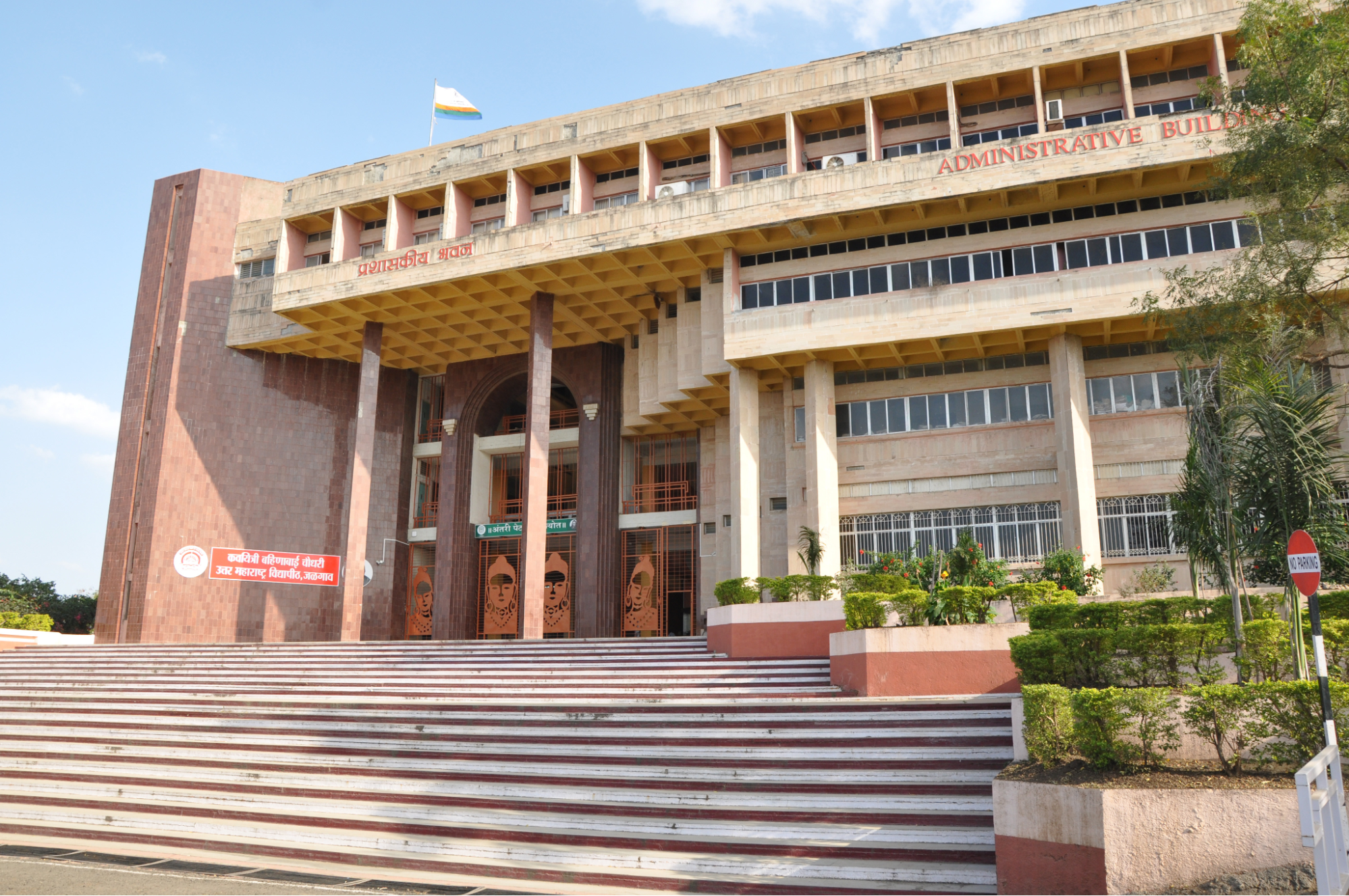
The university is accredited with an 'A' grade by the National Assessment and Accreditation Council (NAAC) and is recognised by the University Grants Commission (UGC) and the All India Council for Technical Education (AICTE). In 2008, the university was renamed in honour of the Marathi poet Bahinabai Chaudhari, following a government ordinance issued by the state of Maharashtra.
As part of its literary and cultural initiatives, the university houses the Kavayitri Bahinabai Chaudhari Study and Research Centre. This centre promotes scholarship on Bahinabai’s poetry and folk traditions, and regularly hosts seminars and discussions featuring contemporary literary figures, including filmmaker Nagraj Manjule and poet Indrajit Bhalerao. In addition to KBCNMU and its affiliated institutions, the district of Jalgaon is home to a number of colleges offering programs in diverse fields.
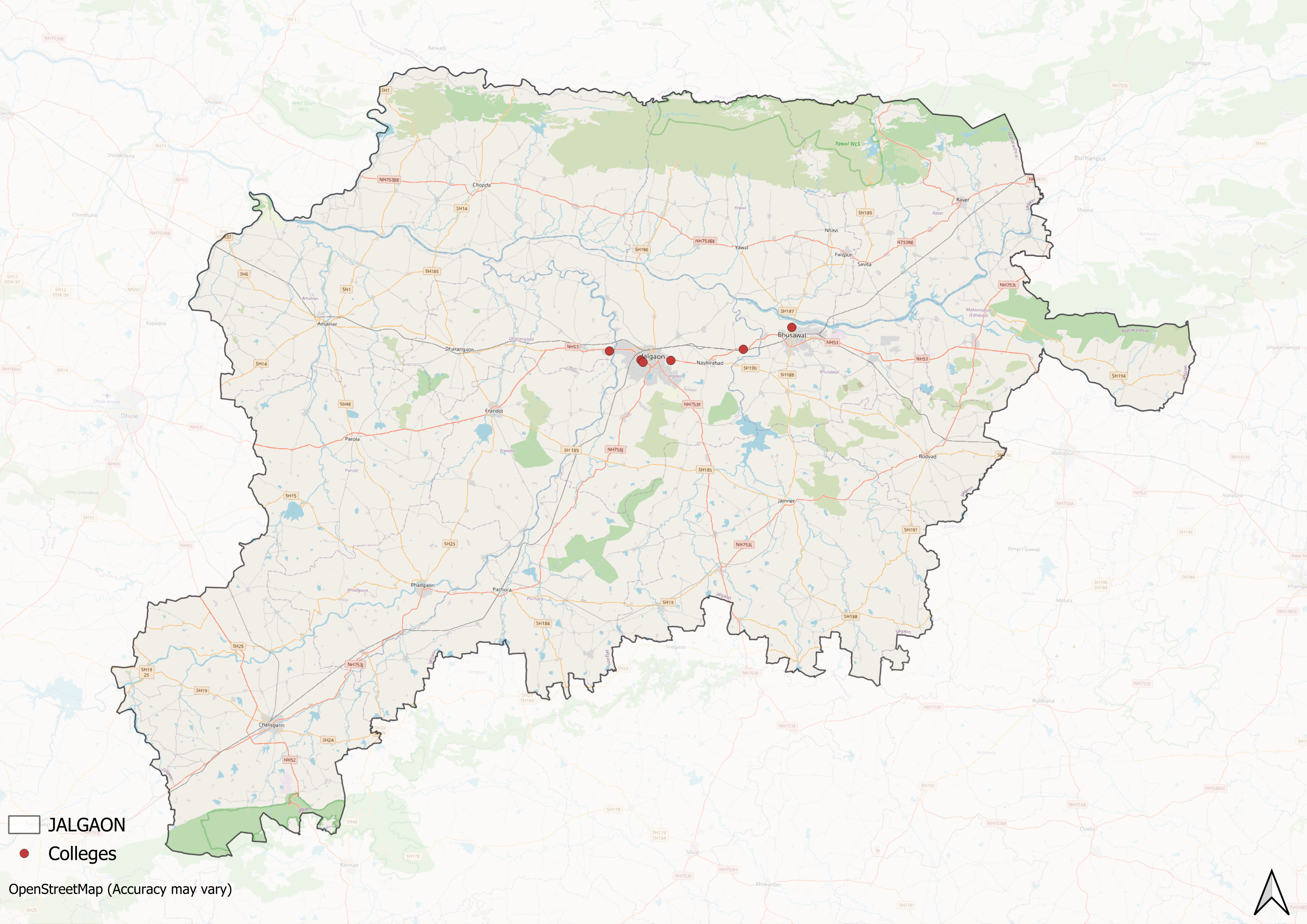
In addition to these institutions, a number of centres for higher education operate throughout the district, which offer programmes across various disciplines. While the landscape of higher education has broadened significantly since independence, disparities in access, particularly along geographic lines, remain evident.
NGOs and Community-Based Education Efforts
Education has been a key driver of social reform, particularly in addressing inequality and expanding access to learning. While formal institutions provide structured education, many communities continue to face barriers due to poverty, social stigma, or lack of resources. To address these challenges, various organisations in Jalgaon have focused on community-based education initiatives, with each working to tackle specific social challenges present in the district.
Vardhishnu
Vardhishnu, a Jalgaon-based NGO founded in 2013 by Adwait Dandwate and Pranali Sisodia, works to rehabilitate and educate children from vulnerable backgrounds, particularly those previously engaged in waste picking. The organisation focuses on children from migrant families who often face economic hardship and social exclusion. Many of these children began scavenging at a very young age and lacked access to stable education.

Vardhishnu’s approach combines education with social support, aiming to reintegrate children into mainstream schooling while addressing the stigma they face both within their communities and in institutional settings. According to interviews with the founders (2017), social stigma and discrimination, including from peers and educators, contribute significantly to dropout rates among such children.
Through outreach, bridge schooling, and advocacy, Vardhishnu has helped over 100 children transition from informal livelihoods into educational environments. The organisation continues to operate as part of a broader effort to promote inclusive education and social equity in the district.
Graphs
Enrollment and Dropout Rate
Schools
Teachers
Sources
James M Campbell. 1880. Gazetteer Of Bombay Presidency: Khandesh, Vol.12. Government Central Press, Bombay.https://archive.org/details/1880GazetteerOfB…
Kavayitri Bahinabai Chaudhari North Maharashtra University. “Philosophy Centre.”https://nmu.ac.in/philosophy_centre/en-us/https://nmu.ac.in/philosophy_centre/en-us/
Kavayitri Bahinabai Chaudhari North Maharashtra University. “SGSK.”https://nmu.ac.in/sgsk/en-us/https://nmu.ac.in/sgsk/en-us/
KCE Society. “About KCES.”https://kcesociety.kces.in/Aboutus/about_kceshttps://kcesociety.kces.in/Aboutus/about_kces
Lekshmi Priya. 2017. “One Man in Jalgaon Has Made It Possible for Over 100 Waste-Picking Children to Study!” The Better India. https://thebetterindia.com/98248/vardhishnu-jalgaon-ngo/#google_vignettehttps://thebetterindia.com/98248/vardhishnu-…
Lokmat. 2019. “Various Programs for Guru Purnima Mela at Maharishi Vyas Temple, Yaval.”Lokmat. https://www.lokmat.com/jalgaon/various-programs-guruparnimela-maharishi-vyas-temple-yaval/#google_vignettehttps://www.lokmat.com/jalgaon/various-progr…
Marathi Leva Samaj. “History.”http://marathilevasamaj.org/history2.htmlhttp://marathilevasamaj.org/history2.html
Pooja Jadhav. 2023. “Shyamchi Aai: A Touching Story of a Mother’s Love and Strength.”Medium.https://medium.com/@jadhav.p12/shyamchi-aai-a-touching-story-of-a-mothers-love-and-strength-4834f3a46c2e#:~:text=The%20book%20has%20become%20a,beloved%20books%20in%20Indian%20literature.https://medium.com/@jadhav.p12/shyamchi-aai-…
Pune Cultural Mapping Team. 2021. “Pandurang Sadashiv Sane.” Sahapedia.https://map.sahapedia.org/article/Pandurang-Sadashiv%20Sane/2599#:~:text=Pandurang%20Sadashiv%20Sane%2C%20fondly%20known,with%20the%20working%2Dclass%20movement.https://map.sahapedia.org/article/Pandurang-…
The Indian Trip. “Amalner City Information.” https://theindiantrip.com/amalner-city/infohttps://theindiantrip.com/amalner-city/info
Vishwajeet Deshmukh. 2021. “The Voice of Bahinabai: A Poetic Legacy From Khandesh”Peepul Tree.https://www.peepultree.world/livehistoryindia/story/people/poet-bahinabai?srsltid=AfmBOoo2U3oc7owYsQruTZ59BS5YwCJ2lyN5O7VxkYThFFcgxwcXB6G1https://www.peepultree.world/livehistoryindi…
Last updated on 28 July 2025. Help us improve the information on this page by clicking on suggest edits or writing to us.